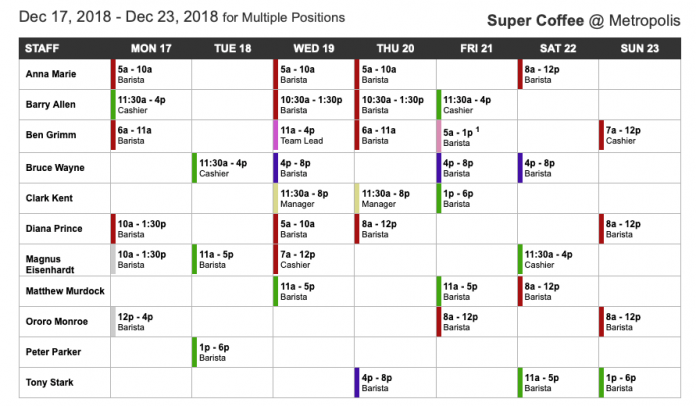How are work shifts organized in your business? We spend many hours of our life at work. The temporary distribution of working hours directly affects our quality of life and, consequently, our mood and our productivity as workers. Do you handle the organization of shifts and schedules of an organization? Some companies usually prioritize the efficiency of production processes or customer service, forgetting that this would not be possible without their workers; Without that human support that makes it possible.
If within your functions is the temporary distribution of the workers of your company, this post will help you to reflect and improve the quality of the organization of shifts in your team and, consequently, their well-being and your productivity.
7 tips for organizing work shifts
1. Legal aspects
It is established that workers may not be forced to work night shifts more than two weeks in a row and stipulates the obligation to promote an organization of working time and breaks that allows compatibility between work and personal life.
2. Your organization
Work shifts must be strategically adapted to the structure, size, location and business objectives, as well as the characteristics of the departments and the number of workers. This can be compared to when automatic barriers are placed according to the size and location of the parking lot. The nature of the services offered or the behavior of the demand for your products, directly affects the working hours of workers. However, it does not always affect all departments equally. Once the budgets and tasks to be performed are known, identify the affected departments to reduce the impact on the part of the organization in which there is no need for rotation.
3. The health of your workers
Shift work can alter physiological systems (sleep disturbances, food …). It is advisable to schedule shift shifts to distribute these schedules evenly among workers. The most recommended option is to rotate shifts slowly, in order to alter as little as possible the natural sleep of employees. Do it for your health, for your job performance and to reduce the accident rate.
4. Your personal life
As human beings, we need emotional stability. Try to ensure that workers can organize their free time with the type of social interaction that each one chooses: family life, sports, hobbies … This stability has an impact on our health, helps us manage emotions and be more flexible in the work environment.
5. Compensation program
It is recommended to propose measures to compensate for night shifts and work on weekends and holidays. The physical wear and the impact on the personal life of the worker, requires extra motivation to boost work performance.
6. Planning and communication
Plan in detail and make periodic reviews. In addition, we advise you to communicate the planning days in advance to be able to listen to your employees if they have any kind of incompatibility and allow them to organize their free time.
7. Use the technology
There are many shift scheduling software in the market that can help you plan, communicate and keep track of your workers’ schedules. Some of them are free and even include instant communication with the person in charge or with the rest of the team.


































